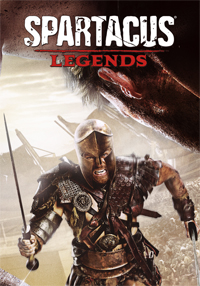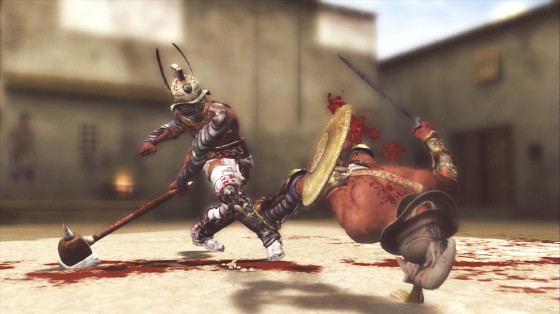




Spartacus: Legends
Developed at Kung Fu Factory
Publisher: Ubisoft
Genre: Fighting
Platforms: XBox 360, Playstation 3
Released June, 2013
My Role: Senior Designer ( Opponent AI, Metagame Design, Player Progression, Monetization )
Game Trailer:
Uncharted Territory
While fighting games have been around for a pretty long time, the concept of a free-to-play fighting game on console had never been attempted before this project. The crew at Kung Fu Factory and I were sailing into unmapped waters as we explored ways to create a game that is fun to play and profitable without requiring players to pay up-front.
A way to keep players engaged and coming back was to design the progression so the player always has a goal within reasonable reach, such as reaching a new level to unlock new gear, defeating or unlocking a boss battle to attain its rewards, or earning privileges to play special gameplay modes (and earning the rewards therein).
Once the player is engaged, we provided premium items and gladiators for the player to purchase at player's discretion. We made sure these items were not required for the player to do well, but tangilbly enhanced the player's experience if some money was spent.
We also provided a way for players to spend to buy gear above player's current level. This "Time is Money" feature allowed players to access higher-level gear and gladiators ahead of schedule if he does not want to spend the time to reach those levels, or if there is an especially obstinate obstacle blocking his progression whose removal can be facilitated with advanced gear or gladiators.
Easy to Learn, Hard to Master
We worked hard to come up with a fighting scheme that players can dive into and start spilling blood, but with enough nuance to keep them coming back to try new things.
To get the player straight into the action, I designed a simple tutorial featuring Spartacus against a hammer-wielding brute. The time frame available for the tutorial was very limited ( about 2 weeks ), so some things were not ideal ( like the instructional text obscuring the action ), but we did what we could in the time we had.
By the end of the tutorial, the player will have experienced all the basic mechanics of the fighting in a hopefully interesting fashion, along with a fair share of aterial spray.
Single-Player Game Modes
While Spartacus: Legends is a multiplayer-focused game, there are times when players want to play on their own before going against live opponents. And also, we wanted the player to be able to play without a live connection.
Because death is semi-permanent in Spartacus: Legends, having single player gameplay where players can sharpen their skills before stepping into live-opponent arenas is of utmost importance.
We eventually grew the single-player practice mode into a full-fledged meta-game of its own, in which the player fights his way through the various districts, encountering and unlocking new fighting styles, and on the way unlocking legendary gladiators (major characters from the series) that can be used in real encounters.
By the time the player unlocks all the districts, he can be sure to have the skills to play on-line competently against live opponents.
Eventually we added other modes that single players can play, but still be competitive (via scoring, etc.) without feeling the agony of being killed by another live player.
Computer Opponent Behavior Challenges
Due to staffing constraints, AI programming resources were limited. In implementing opponent behavior, I had to make due with a system that did not have dynamic learning. I had designed a featured called "Weight Gain" in a previous fighting game title at Kung Fu Factory that worked very well, but there was no time to bring it over.
In lieu of a learning system, I had to provide more possibilities per situation so the AI does not look too robotic/repetitive.
Everything was data-driven, which yielded its own challenges. Without a scripting system nor any variables to store data, each attack and defense to an attack had to be hand-crafted in the data, which took a very long time, and yielded gigantic data tables.
For a fighting game opponent to be effective, he must master the proper timing of actions in the heat of battle. What made the AI especially challenging to implement were the plethora of varying windows in the combat design that didn't really follow any logical patterns, coupled with some system-dependent lag issues. These factors made some AI commands unreliable under certain conditions, and we had to go in and buffer such commands' tags with leading and following frames so they are not missed.
Despite all the shortcomings of the AI system, the results were still playable and challenging, but not too much so.
©Richard Yeh